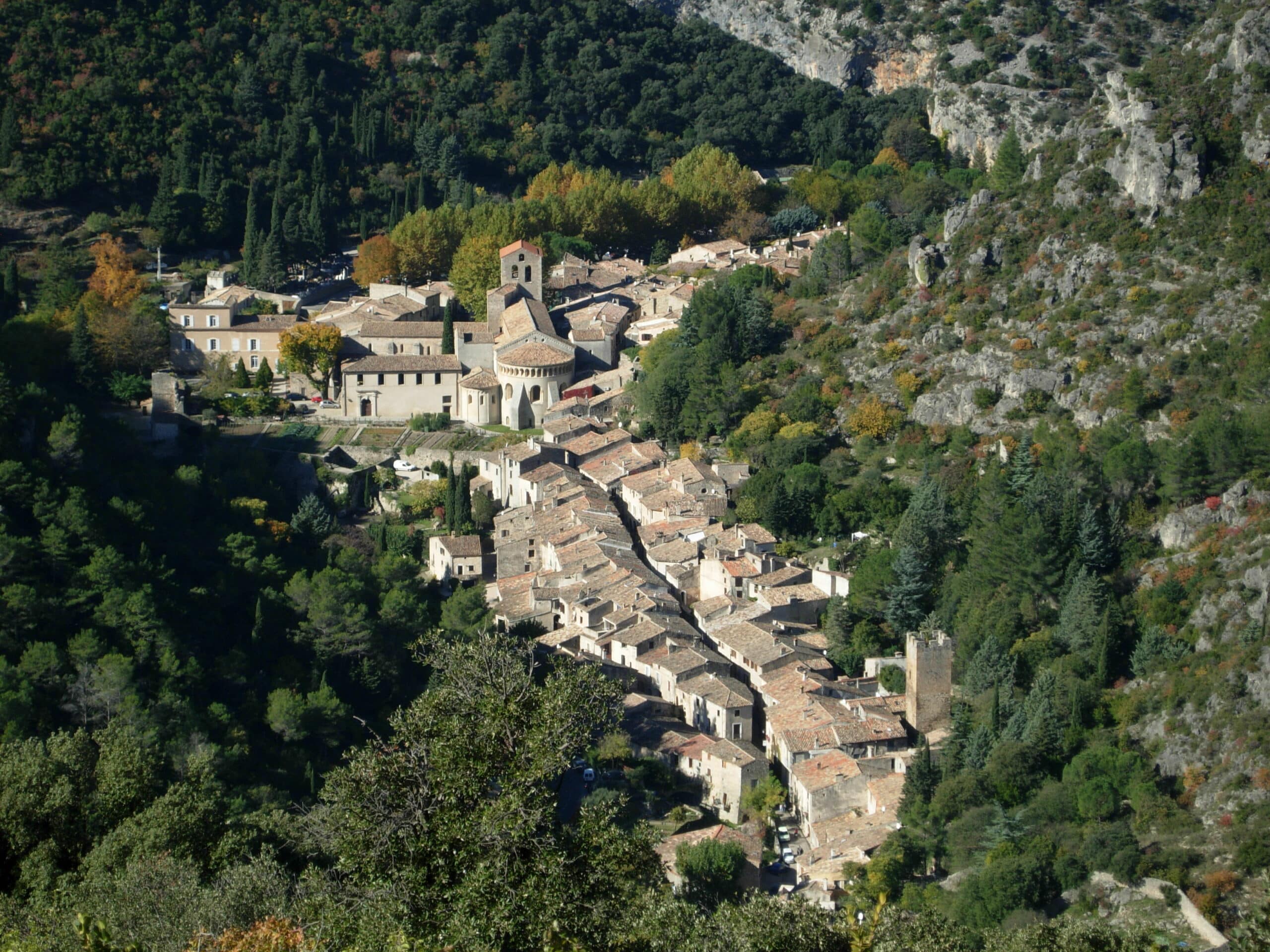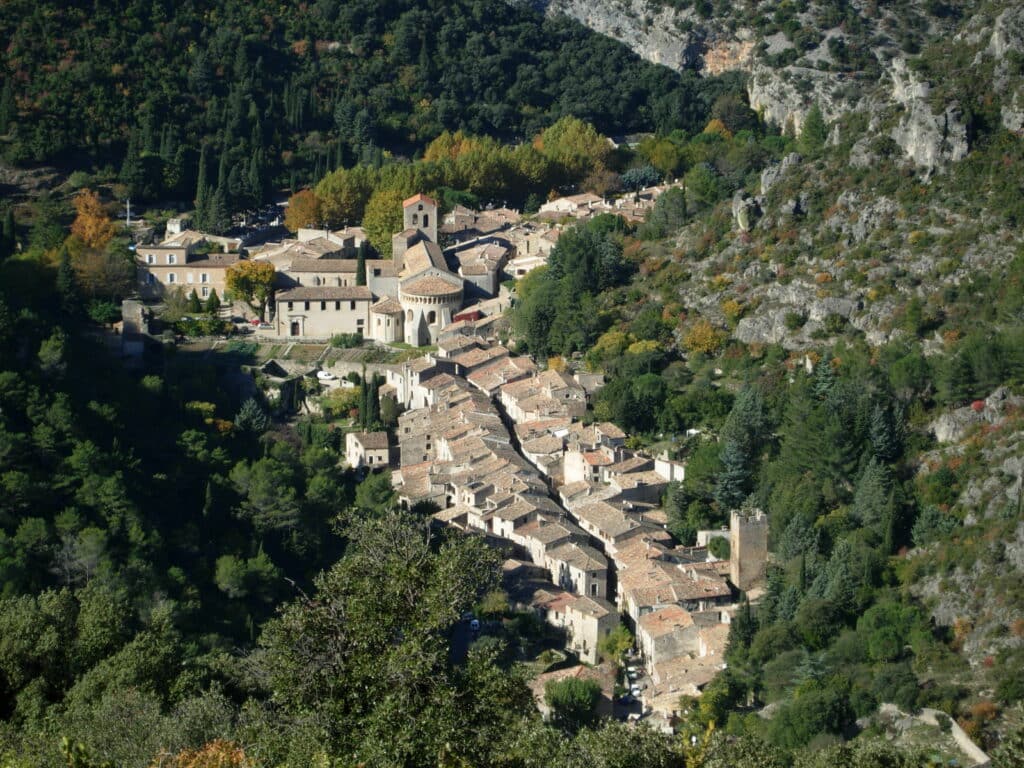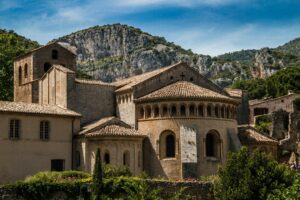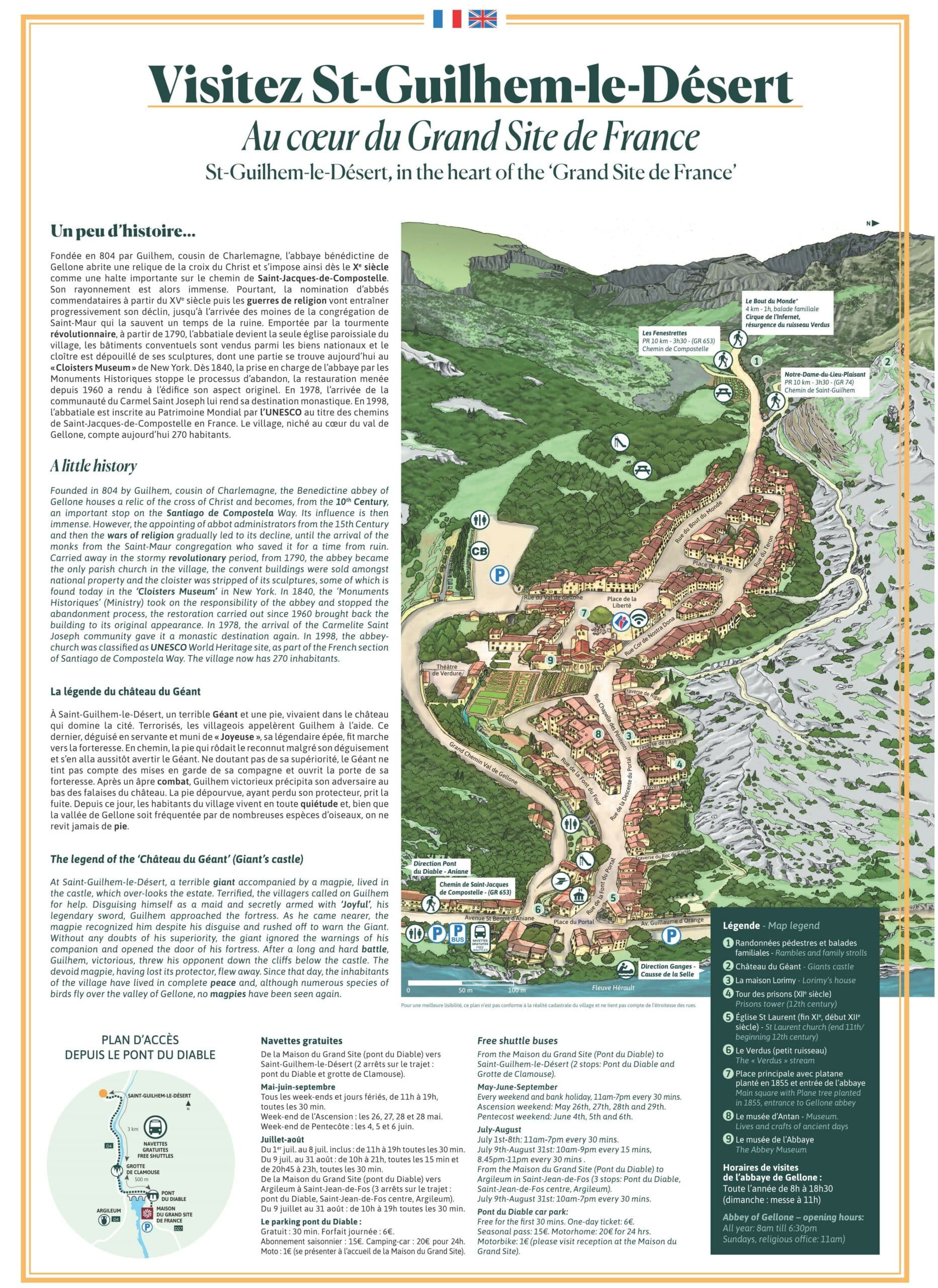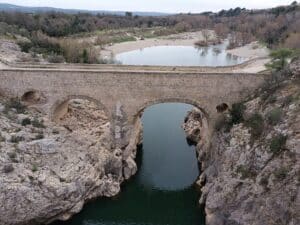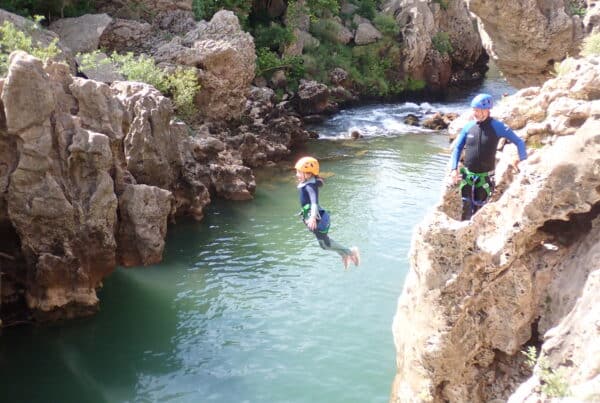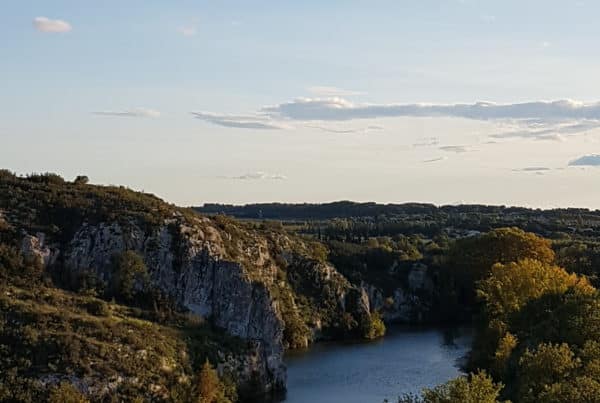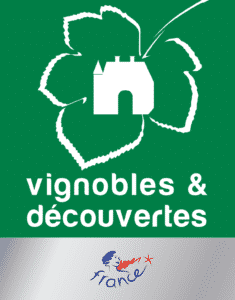Saint-Guilhem-le-Désert is a small commune in the Hérault department in the Occitanie region. The village owes its name to Guilhem, a hermit who lived in the area in the 9th century. Legend has it that he was Charlemagne’s brother and founded a monastic community in the area.
The village is best known for its abbey, Gellone Abbey, founded in the 9th century by Guilhem. Today, the abbey is an important pilgrimage site on the route to Santiago de Compostela. The abbey is also a UNESCO World Heritage site.
Over the centuries, Saint-Guilhem-le-Désert became an important trading center, notably for the production of silk fabrics. In the 19th century, the commune underwent significant industrial development thanks to coal mining in the region.
Today, Saint-Guilhem-le-Désert is a popular tourist destination, with its cobbled streets, stone houses and charming craft stores. The village is also surrounded by a magnificent natural landscape, with the Haut-Languedoc mountains and the Hérault gorges nearby, ideal for leisure and sporting activities.
The origins of Saint-Guilhem-le-désert
The village was named after the first cousin of the great French emperor Charlemagne himself. After many battles and victories, cousin Guilhem d’Orange decided to isolate himself in the Val de Gellone in 804. Inspired by Saint-Benoît, the creator of the Aniane monastery, he established the first local popular beliefs. The abbey became a place of worship around a relic of the true cross of Jesus donated by Charlemagne.
The second part of the village’s name, “the desert”, is not due to the desertification of the environment. On the contrary, the surrounding vegetation is rather lush due to the many natural springs present. The name “desert” derives from the small number of inhabitants living there at the time. It was not until 300 years after Saint-Guilhem’s death that the suffix “le désert” was added.
What to do in Saint-Guilhem-le-Désert
After visiting the village’s architectural treasures, such as the Gellone Abbey, the ruins of the Château du Géant, the Tour des Prisons, the Church of Saint-Laurent or the Maison Lorimy, don’t hesitate to stroll through the picturesque alleyways and take advantage of the local craft stores. The Musée de l’Abbaye and the Musée d’Antan are also well worth a visit. End your stroll with a cool drink in one of the cafés on the village square, in the shade of the famous century-old plane tree, designated a “remarkable tree of France”.
Sometimes a victim of its own success, choose the low season to fully appreciate the calm and serenity of the village and the Saute-Rocs, as the inhabitants of Saint-Guilhem-le-Désert are known.
Around Saint-Guilhem
Saint-Guilhem-le-Désert is the starting point for beautiful hikes of all levels. The cirque de l’Infernet represents gigantic limestone walls 200 m high. It can be reached by heading out of the village towards the upper Val de Gellone. A long-distance hiking trail (GR 74) will enable motivated hikers to climb the cirque walls, via two access points, towards the Saint-Guilhem-le-Désert mountains. Here are our favorites:
- The Fenestrettes hike (3h30, 10km loop, 715m ascent)
- The Notre-Dame-du-Lieu-Plaisant hike (4h00, 12km loop, 670 m ascent)
Another must-see is the Grotte de Clamouse, located between Saint-Jean-de-Fos and Saint-Guilhem. The cave is famous for its magnificent geological formations, including stalactites, stalagmites, draperies, petrified waterfalls and crystal basins. It is open to the public for guided tours throughout the year. It’s particularly pleasant to visit on hot summer days, thanks to the cool atmosphere.
And let’s not forget the Hérault river and its many swimming spots both upstream and downstream of Saint-Guilhem. You can also hire canoes for trips ranging from 4 to 15 km.
It’s also the starting point for devil’s canyoning, with white-water swimming, zip-lining and jumps of up to 10 meters.
The legend of Devil’s Bridge
Legend has it that when the bridge was being built, every morning the works completed the day before would be found destroyed. As a result, the work was not progressing, and the craftsmen, caught off-guard, asked Saint-Guilhem for help. One evening, after a day’s work, he remained hidden and saw the devil himself having fun destroying the bridge’s overhangs. St Guilhem came out of hiding and proposed a pact with the Devil. They agreed on a deal. The bridge would be built by the devil in such a way as to be indestructible. In exchange, Saint-Guilhem pledged to offer the devil the first soul to cross the bridge, and make him one of his disciples.
Three days later, when the bridge was completed, Saint-Guilhem and the Devil met on either side of the bridge. Guilhem, accompanied by a stray dog, used trickery to throw a bone across the bridge. The dog was thus the first soul to cross. The infuriated devil tried to destroy the bridge, but it had become indestructible. He threw himself off the bridge with such force that his impact with the water formed the “devil’s hole”. Passing pilgrims have taken to throwing a stone into the water to keep the devil there forever.
Practical info
Parking in the gorges is now complicated. Since 2020, the political will of local elected representatives has been to relieve traffic congestion in the Hérault gorges. This exceptional site is classified as a Natura 2000 zone and therefore requires the protection it needs. The flora and fauna are a key asset of this fragile environment. If, however, you wish to swim at the “umbrella” (Tuff’s natural waterfall), park off the gorge road. And don’t trample on this extremely rare geological formation. Prohibition signs have been erected to mark sensitive areas. Fines may be imposed by sworn officials if you trespass. The best solution is to park in the parking lots provided and take the free shuttle bus.
Free shuttles
From the Maison du Grand Site (Pont du Diable) to Saint-Guilhem-le-Désert (2 stops on the way: Pont du Diable and Grotte de Clamouse) :
May-June-September
- Every weekend and public holiday, 11am to 7pm, every 30 mins.
- Ascension weekend: May 26, 27, 28 and 28. Pentecost weekend: June 4, 5 and 6
July-August
- July 1 to 8 inclusive: 11 a.m. to 7 p.m. every 30 minutes
- July 9 to August 31: 10am to 9pm, every 15 mins and 8.45pm to 11pm, every 30 mins
From Maison du Grand Site (Pont du Diable) to Argileum in Saint-Jean-de-Fos (3 stops along the way: Pont du Diable, Saint-Jean-de-Fos center, Argileum):
- July 9 to August 31: 10 a.m. to 7 p.m. every 30 mins.
Pont du Diable parking lot
- Free : 30 min
- Day pass: €6
- Season pass: €15
- Motorhome: €20 for 24 hours
- Motorcycles: 1€ (please report to the Maison du Grand Site reception desk)
Gellone Abbey opening times
- Weekdays year-round: 8am – 5:40pm (July and August until 6:30pm)
- Sunday and public holidays: 8 a.m. – 10:45 a.m. | 12:00 p.m. – 5:40 p.m.
- July & August weekdays: 8am – 6.30pm
- Sunday and public holidays: 8am-10.45am | 12pm-6.30pm
- All year round, the cloister is closed to visitors between 12:00 and 14:00 (until 14:30 in summer, and on Sundays and public holidays).
Religious services
- Mass at 11:00 every Sunday
- Lauds 07:15, 07:30 in July & August. Noon (weekdays) 12h, 12h15 in July & August
- Vespers 6 p.m., 6:30 p.m. July & August
To find out (even) more, visit theSaint-Guilhem-le-Désert Vallée de l’Hérault tourist office website.

